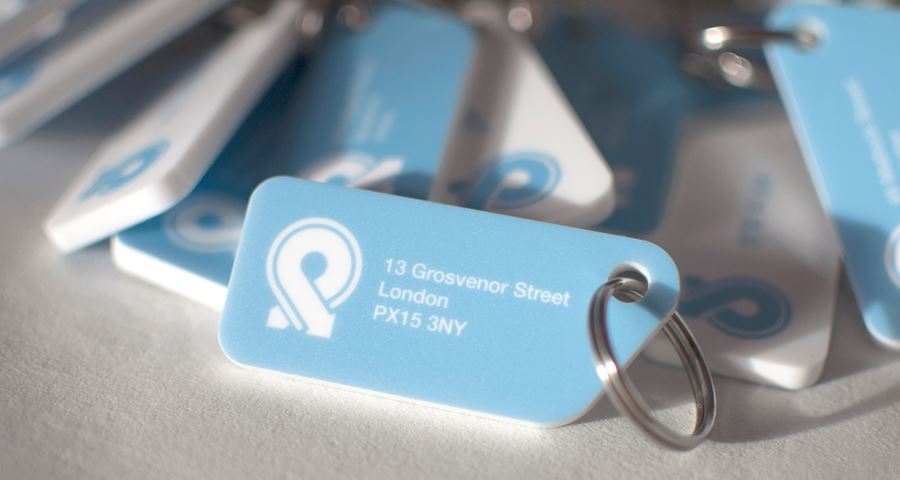ProxyAddress Architecture : Beazley Designs of the Year
Q&A with Chris Hildrey
The Design Museum speaks to designer and architect, Chris Hildrey, about his project, ProxyAddress, nominated for this year's Beazley Designs of the Year. The system uses available records of more than half a million empty homes to create a 'proxy' address, which can be used to obtain identification for the homeless.
#BeazleyDesignsoftheYear

Q: Congratulations on being nominated for this year’s Beazley Designs of the Year. What does it mean to you to be put up for this award?
A: It’s a huge honour to be nominated and in particular to see ProxyAddress shortlisted in the architecture category with a host of incredible projects. Also, the exhibition opens on Hildrey Studio’s first anniversary so it comes at a great time!
Q: Can you take us through how your project, ProxyAddress, works?
A: ProxyAddress deals with the fact that our addressing system, which was introduced to define a location, has now become a de facto means of identification. This means that if a person loses their home, they’re immediately cut off from the services they need. The ability to apply for jobs, receive benefits, open a bank account, see a GP: all are taken away when you need them most.
ProxyAddress provides a stable address throughout this period of instability by duplicating the existing address data owned by our partners and creating a consistent 'proxy' which users can use to access services regardless of their location or how often they move. It’s secure, private, and has no effect on the existing property.
Q: What is the guiding principle behind ProxyAddress, and can you tell us why you felt the need to set it up?
A: The project is guided by the belief that everybody deserves a safety net. Limited social housing, rising rent costs, and frozen housing benefits have combined to make the end of a tenancy the number one cause of homelessness in the UK today. Without any support, those facing eviction soon find themselves at a cliff edge, facing the loss of all the services that might otherwise have helped them recover.
As an architect I want to do all I can to help make our towns and cities as inclusive as possible. But an architect’s traditional remit is to design what is going to get built, not to decide what should be built. ProxyAddress is my attempt to help those who are currently marginalised by our built environment be supported by it instead.
Q: What was the inspiration behind ProxyAddress?
A: Though the project started from an idea I had many years ago around the difficulty of receiving post without an address, it was through speaking to those affected that I came to realise that post is a small part of the issue – and one that is set to get smaller as more services move to digital. In fact, the key issue is the loss of civic identity. So the real inspiration behind the project was the hundreds of people going through homelessness who were kind enough to give me their time and trust in speaking to me about their experiences and the challenges they face every day.

Q: What has the reaction been like to ProxyAddress so far? Did you experience any obstacles along the way and how did you overcome them?
A: The reaction has been better than I could have hoped for. We’ve received incredible support from individuals and organisations across a range of sectors which has been central to getting the project to where it is today. As with anything new, there will always be obstacles but I find that if you listen, adapt, and keep momentum, there is always a way over, around, or through.
Q: What does home mean to you?
A: For me, home is where you’re in control of your world - a space to live on your own terms. It’s something we often take for granted but is so vital to our privacy, dignity, and mental health.
Q: What does the future hold for ProxyAddress? What are the next stages?
A: We’re just about to enter a live trial of the system in London, working with charities, banks, and regulators to demonstrate compliance with various aspects of legislation. We’ve also recently announced our new partnership with The Big Issue who, along with our other fantastic partners, continue to help us make sure that ProxyAddress provides access to a broad range of services and support.
As a potential lifeline to critical services, it’s vital that we make the system robust and this takes time. But after the trial, we foresee ProxyAddress expanding into multiple councils with an even broader reach.
Q: As an alumni of the Design Museum’s Designer in Residence programme, how did the experience help you with shaping ProxyAddress and your career now?
A: The Designers in Residence programme was critical to both. At the time of the residency, I was employed as a project architect running the design and construction of the new Natural History Museum main entrance. The residency complemented this work, giving me a space away from traditional practice to find my own voice. It gave me the support and connections to really interrogate an idea to a level that would otherwise have been unthinkable and, in doing so, helped me get the momentum to establish my own studio and push ProxyAddress into becoming a reality.

Q: Do you have any advice for the latest cohort of Designers in Residence?
A: Speak to as many people as possible and ask as many questions as you can. Behind every project, every book, every image, there’s a person who is usually delighted to speak about their topic and who will invariably surprise you with a perspective you’d never considered.
Q: What’s the one thing you’d like people to remember about your project when they leave the Beazley Designs of the Year exhibition?
A: That architecture is about people and much more than just buildings – that the intangible systems which underpin how people live in our cities can be as important as the structures that physically define them.
Related exhibition